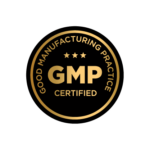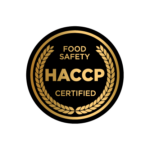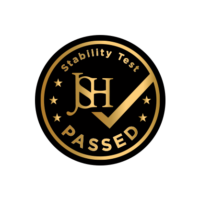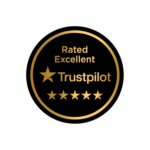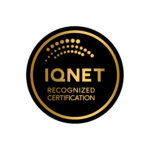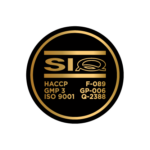Citicolin er ikke ligefrem et kendt navn. I modsætning til D-vitamin eller omega-3 har de fleste mennesker aldrig hørt om det. Men i en verden af kosttilskud til hjernens sundhed har det udviklet et stille ry blandt forskere og producenter, som kender litteraturen.
Det interessante ved citicolin er, hvordan det befinder sig i denne mærkelige mellemting. Det er ikke trendy nok til at skabe den hype, der omgiver stoffer som løvemanke eller nootropiske cocktails. Det har ikke den marketingmaskine bag sig, som skubber visse kosttilskud ind i mainstream-bevidstheden. Men det er heller ikke et eller andet obskurt forskningskemikalie, som kun biohackere diskuterer i fora.
I stedet befinder citicolin sig på et mærkeligt sted, hvor folk, der kender til det, har en tendens til at tage det alvorligt, mens den brede offentlighed er helt uvidende om dets eksistens. Selv inden for kosttilskudskredse finder man folk, der sværger til det, og andre, der aldrig har gidet at undersøge det.
Så jeg besluttede mig for at finde ud af det ordentligt. Det, jeg opdagede, var mere interessant, end jeg havde forventet - en forbindelse med ægte forskningsstøtte, nogle praktiske anvendelser og et par vigtige begrænsninger, som sjældent bliver diskuteret.
Citicolin har et af de kemiske navne, der får øjnene til at løbe i vand: cytidin 5′-diphosphocholin. Heldigvis kan vi holde os til citicolin eller dets andet almindelige navn, CDP-cholin.
I bund og grund er citicolin et stof, som din hjerne bruger til at opbygge og vedligeholde cellemembraner. Tænk på det som et råmateriale til opbygning og reparation af hjerneceller. Når du tager citicolin, nedbryder din krop det til to nøglekomponenter: cholin og cytidin. Begge disse spiller en vigtig rolle i hjernens funktion.
Kolindelen er nok mere velkendt - det er det samme stof, som findes i æg, og som bruges til at lave acetylkolin, en neurotransmitter, der er involveret i hukommelse og indlæring. Cytidin-komponenten er mindre kendt, men lige så vigtig. Den er med til at skabe de fosfolipider, der danner hjernecellemembraner, og understøtter produktionen af nukleotider, som cellerne har brug for til energi og reparation.
Det er denne dobbelte virkning, der gør citicolin interessant for forskere. De fleste cholintilskud giver kun cholin. Citicolin leverer både cholin og de byggesten, der er nødvendige for at bruge det effektivt i hjernen.
Forbindelsen findes naturligt i alle kroppens celler, men i meget små mængder. Din hjerne kan selv producere noget citicolin, men ikke nødvendigvis nok til at opfylde de øgede krav under stress, aldring eller skader. Det er grunden til, at kosttilskudsfirmaer blev interesserede - tanken er, at ekstra citicolin kan støtte hjernens funktion, når den naturlige produktion ikke kan følge med.
Men der er en betydelig kløft mellem denne biologiske logik og de dokumenterede terapeutiske fordele. At forstå, hvad citicolin gør i kroppen, fortæller os ikke automatisk, om tilskud med det rent faktisk hjælper noget. Det er her, forskningen kommer ind i billedet.
Citicolin blev ikke opdaget af kosttilskudsfirmaer, der ledte efter den næste hjernebooster. Det kom ud af seriøs medicinsk forskning i 1970'erne og 80'erne, hvor forskere forsøgte at forstå, hvordan hjerneceller reparerer sig selv efter skader.
Forbindelsen blev først syntetiseret og studeret af forskere, der undersøgte genopretning efter slagtilfælde. De vidste, at hjernecellemembraner blev beskadiget under slagtilfælde, og de ledte efter måder at støtte reparationsprocessen på. Citicolin fangede deres opmærksomhed, fordi det så ud til at give de nøjagtige byggesten, som beskadigede hjerneceller havde brug for til at genopbygge deres membraner.
De første medicinske anvendelser var udelukkende fokuseret på neurologiske nødsituationer - slagtilfælde, traumatisk hjerneskade og andre akutte hjerneskader, hvor cellerne aktivt døde eller blev beskadiget. Hospitaler i Europa og Asien begyndte at bruge citicolin som en del af standardbehandlingsprotokollerne for disse tilstande. Det blev ikke betragtet som et kosttilskud eller et stimulerende stof; det var medicin til alvorligt skadede hjerner.
Overgangen til generel hjernesundhed skete gradvist. Efterhånden som forskerne studerede citicolins virkning på beskadigede hjerner, begyndte de at spekulere på, om det også kunne støtte en sund hjernefunktion. Kunne det hjælpe med aldersrelateret kognitiv tilbagegang? Hvad med generel hukommelse eller fokus hos raske mennesker?
Dette skift fra akutmedicin til forebyggende tilskud repræsenterer et stort spring i anvendelsen. Bare fordi noget hjælper med at reparere alvorligt beskadiget hjernevæv, betyder det ikke automatisk, at det vil forbedre den normale hjernefunktion. Men kosttilskudsindustrien var interesseret i den mulighed, og forskerne var nysgerrige nok til at begynde at teste den.
Det er her, historien bliver kompliceret - og hvor vi er nødt til at se på, hvad de faktiske undersøgelser fandt.
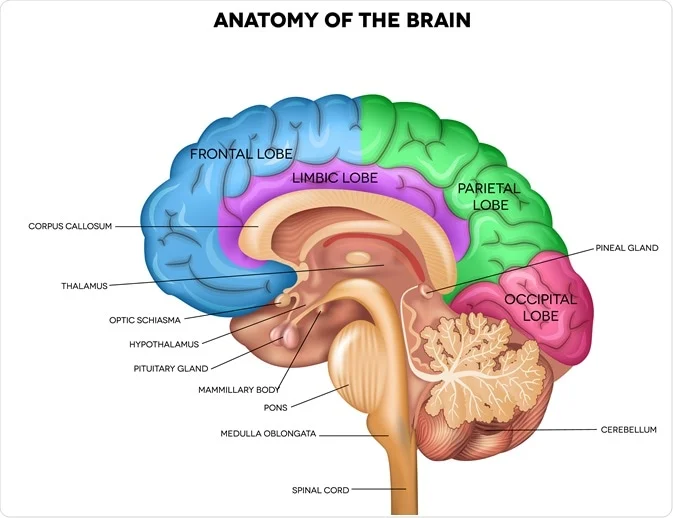
Forskningen i citicolin er mere omfattende, end de fleste er klar over. I løbet af de sidste to årtier har forskere testet det på tusindvis af deltagere på tværs af flere tilstande - genopretning af slagtilfælde, traumatisk hjerneskade, aldersrelateret kognitiv tilbagegang og sund aldring. Omfanget er virkelig imponerende og spænder fra små pilotundersøgelser til massive internationale forsøg, der involverer næsten 2.300 deltagere i enkeltundersøgelser.
Men hvad opdagede de egentlig? Resultaterne tegner et billede af et stof med ægte terapeutiske virkninger, især inden for hjernens genopretning og aldersrelateret kognitiv støtte.
Ud af alle de citicolin-undersøgelser, der er gennemført i løbet af to årtier, var kun to udtrykkeligt designet med sikkerhed som det primære resultat. Det er bemærkelsesværdigt, når man tænker på de tusindvis af mennesker, der er blevet undersøgt. Det første dedikerede sikkerhedsstudie blev udført af Hall et al. (2020), et 12-måneders åbent forsøg med 10 patienter med FXTAS, en sjælden neurologisk tilstand, der brugte 1000 mg dagligt med intensiv overvågning, herunder laboratorietest og omfattende sporing af uønskede hændelser. Det andet blev udført af Secades et al. (2006), et dobbeltblindt, randomiseret, placebokontrolleret pilotstudie, der undersøgte sikkerheden hos patienter med intracerebral blødning med 1000 mg to gange dagligt i to uger, hvor det primære endepunkt specifikt var antallet af uønskede hændelser.
Tænk over det et øjeblik. Årtiers forskning, tusindvis af deltagere og kun to studier, der havde sikkerhed som hovedfokus. Det er ikke nødvendigvis et problem, men det fortæller os noget vigtigt om, hvordan lægemiddelforskning typisk fungerer - sikkerhed bliver vurderet som en sekundær bekymring, mens forskerne jagter effektresultater.
Det banebrydende arbejde kom fra forskning i slagtilfælde, hvor forskere desperat søgte efter noget, der kunne hjælpe patienter med at genvinde hjernefunktionen. Clark et al. udførte de grundlæggende systematiske dosis-respons-undersøgelser, startende med deres undersøgelse i Neurology i 1997(Clark et al., 1997), som metodisk testede forskellige doser hos 259 patienter på 21 amerikanske centre.
Resultaterne var slående. Patienter, der fik citicolin, viste betydeligt bedre kognitiv bedring sammenlignet med placebogrupper. Ved den optimale dosis på 2000 mg dagligt viste patienter med slagtilfælde målbart forbedrede neurologiske funktionsscorer og hurtigere bedring af sprog, hukommelse og motoriske færdigheder. Forbedringerne var ikke subtile - de var klinisk meningsfulde forskelle, der gav sig udslag i bedre funktion i den virkelige verden.
Dette blev efterfulgt af Clark et al.s slagtilfældeforsøg i 1999 med 394 patienter, som igen fandt, at "forekomsten og typen af bivirkninger var ens mellem grupperne", når man sammenlignede citicolin med placebo. Forskerne opskalerede derefter til deres største undersøgelse(Clark et al., 2001), et fase III-forsøg med 899 patienter, der testede 2000 mg dagligt, hvor de igen rapporterede, at "forekomsten og typen af bivirkninger var ens mellem grupperne."
Denne massive undersøgelse viste, at citicolinbehandlede patienter viste overlegen bedring inden for flere kognitive områder - opmærksomhed, hukommelsesdannelse og eksekutiv funktion - sammenlignet med standardbehandling alene. Forbedringerne var vedvarende i løbet af den 12 uger lange undersøgelsesperiode og korrelerede med bedre score for funktionel uafhængighed.
Det mest omfattende datasæt kommer fra det massive ICTUS-forsøg udført af Dávalos et al. (2012), der involverede 2.298 slagtilfældepatienter i flere lande, som testede 2000 mg dagligt. Selvom denne undersøgelse ikke nåede sit primære mål om at reducere den samlede invaliditet, fortalte de kognitive resultater en anden historie. Patienter, der fik citicolin, klarede sig markant bedre i hukommelsestests, opmærksomhedsopgaver og målinger af behandlingshastighed. De kognitive fordele var mest udtalte hos patienter med moderat sværhedsgrad af slagtilfælde, hvilket tyder på, at citicolin virker bedst, når hjernevævet er beskadiget, men ikke helt ødelagt.
Resultaterne var slående i deres konsistens. På tværs af alle dosisniveauer og undersøgelsespopulationer var antallet af uønskede hændelser statistisk set ikke til at skelne fra placebogrupperne.
Efterhånden som tilliden til citicolins virkninger voksede, begyndte forskerne at teste det i sundere befolkningsgrupper. Det er her, historien bliver særlig interessant for brugere af kosttilskud.
Et særligt afslørende studie af Nakazaki et al. (2021) undersøgte 100 raske ældre deltagere (i alderen 50-85 år) over 12 uger, hvor de brugte 500 mg dagligt. Resultaterne viste målbare forbedringer på flere kognitive områder, der har betydning for det daglige liv.
Deltagere, der tog citicolin, viste øget opmærksomhed - de kunne fokusere på opgaver i længere tid uden mental træthed. Hukommelsesdannelsen blev forbedret, især for ny information og associationer mellem ansigt og navn. Vigtigst af alt steg bearbejdningshastigheden, hvilket betyder, at deltagerne kunne gennemtænke problemer og træffe beslutninger hurtigere end placebogruppen.
Forskerne brugte omfattende kognitive testbatterier, ikke bare subjektive spørgeskemaer. Undersøgelser af hjernens billeddannelse i undergrupper af deltagere viste øget aktivitet i regioner, der er forbundet med opmærksomhed og hukommelse, hvilket tyder på, at de kognitive forbedringer havde ægte neurologiske underbygninger.
Disse resultater stemmer overens med tidligere forskning af Spiers et al. (2010) hos raske midaldrende kvinder, som viste forbedret opmærksomhed og psykomotorisk hastighed efter blot 28 dages tilskud af citicolin på 250-500 mg dagligt.
COBRIT-forsøget(Zafonte et al., 2012) testede citicolin hos 1.213 patienter med kompliceret mild, moderat og svær TBI med 2000 mg dagligt i 90 dage.
Mens undersøgelsens primære funktionelle resultat ikke nåede statistisk signifikans, var de kognitive resultater overbevisende. Patienter med moderat traumatisk hjerneskade viste signifikant forbedret hukommelseskonsolidering, bedre opmærksomhedskontrol og hurtigere informationsbehandling sammenlignet med placebo. Virkningerne var mest udtalte hos patienter, der startede behandlingen inden for 24 timer efter skaden, hvilket tyder på, at citicolin virker bedst, når hjernens reparationsprocesser er mest aktive.
Måske er det vigtigste, at disse kognitive forbedringer blev omsat til bedre livskvalitet og øget evne til at vende tilbage til arbejde eller skole - resultater, der betyder mere end testresultater.
Forskningen omfattede endda stofafhængighed, hvor Yoon et al. (2010) testede citicolin hos metamfetaminafhængige patienter i en dosis på 2000 mg dagligt. Ud over sikkerhedsresultaterne afslørede denne undersøgelse noget fascinerende om citicolins bredere virkninger på hjernens funktion.
Patienter, der fik citicolin, viste forbedret impulskontrol, bedre beslutningstagning under stress og forbedret arbejdshukommelse - kognitive funktioner, der typisk er svækkede ved afhængighed. Billeddannelse af hjernen viste øget aktivitet i præfrontale regioner, der er forbundet med udøvende kontrol. Selv om dette ikke var et kognitivt forbedringsstudie i sig selv, viste det citicolins evne til at understøtte højere hjernefunktioner, selv i kompromitterede populationer.
Det, der gør disse forskningsresultater særligt overbevisende, er, at de stemmer overens med citicolins kendte mekanismer. Stoffet øger fosfatidylcholinsyntesen i hjernens cellemembraner, forbedrer produktionen af acetylcholin og understøtter cellernes energimetabolisme gennem forbedret nukleotidsyntese.
Undersøgelser af hjernens billeddannelse viser konsekvent, at tilskud med citicolin øger aktiviteten i regioner, der er forbundet med opmærksomhed, hukommelse og eksekutiv funktion. Det er ikke bare korrelation - de neurologiske ændringer matcher de kognitive forbedringer, der ses i adfærdstest.
Her er, hvad der fangede min opmærksomhed, da jeg dykkede ned i undersøgelserne: På trods af al denne forskning er der en bemærkelsesværdig konsistens i sikkerhedsresultaterne, som afslører noget vigtigt om citicolins terapeutiske vindue.
Ud af alle de citicolinundersøgelser, der er gennemført i løbet af to årtier, var kun to eksplicit designet med sikkerhed som det primære resultat. Det første dedikerede sikkerhedsstudie blev udført af Hall et al. (2020), et 12-måneders åbent forsøg med 10 patienter med FXTAS, der brugte 1000 mg dagligt med intensiv overvågning. Det andet var af Secades et al. (2006), der undersøgte sikkerheden hos patienter med intracerebral blødning med 1000 mg to gange dagligt.
De fleste sikkerhedsdata kommer fra effektivitetsforsøg, men disse undersøgelser var overraskende strenge i deres sikkerhedsovervågning. De tidlige Clark-studier fandt "ingen lægemiddelrelaterede alvorlige bivirkninger eller dødsfald" og konkluderede, at "oral citicolin kan bruges sikkert med minimale bivirkninger." Det massive ICTUS-forsøg med 2.298 deltagere viste, at antallet af bivirkninger ikke kunne skelnes statistisk fra placebogrupperne.
Ud over kontrollerede forsøg er der massive overvågningsdata fra den virkelige verden fra Cho & Kim (2009), der sporer 4.191 patienter, der får citicolin i doser fra 500 til 4.000 mg dagligt. Disse data fra den virkelige verden bekræftede den sikkerhedsprofil, der blev set i kontrollerede forsøg.
Sikkerhedskonsistensen går på tværs af vidt forskellige befolkningsgrupper - slagtilfældepatienter, raske ældre voksne, hjerneskadepatienter og stofafhængige personer viser alle stort set identiske sikkerhedsprofiler. Denne overensstemmelse på tværs af populationer er usædvanlig i forskning i kosttilskud og tyder på en virkelig robust sikkerhedsmargin.
Det forskningsbillede, der tegner sig, er bemærkelsesværdigt konsistent: citicolin giver målbare kognitive fordele på tværs af forskellige befolkningsgrupper, med effekter, der er mest udtalte inden for opmærksomhed, hukommelsesdannelse og behandlingshastighed. Fordelene viser sig både i beskadigede hjerner, der kommer sig efter en skade, og i sunde hjerner, der kæmper med aldersrelateret tilbagegang.
Dosis-respons-forholdet fremgår tydeligt af forskningen. Virkningerne bliver tydelige ved 500 mg dagligt hos raske voksne, og de optimale fordele ses typisk ved 1000-2000 mg dagligt. De kognitive forbedringer udvikler sig over uger snarere end timer, hvilket tyder på, at citicolin virker ved at støtte den underliggende hjernestruktur og -funktion snarere end at give akut stimulering.
Det, der gør citicolin unikt på nootropics-området, er denne kombination af robuste effektdata og en enestående sikkerhedsprofil. De fleste hjernetilskud mangler enten solid effektforskning eller har bekymrende sikkerhedshuller. Citicolin har både de terapeutiske virkninger og det sikkerhedsfundament, der er nødvendigt for daglig, langvarig brug.
Dette forskningsgrundlag er grunden til, at citicolin har fået sin plads i evidensbaseret kognitiv forbedring. Fordelene er reelle, målbare og vedvarende - præcis det, du ønsker af et stof, du tager for hjernens sundhed på lang sigt.
Efter at have undersøgt to årtiers forskning med tusindvis af deltagere skiller citicolin sig ud i det overfyldte nootropiske landskab af én afgørende grund: Det har de sikkerheds- og effektdata, som de fleste kosttilskud simpelthen mangler.
Mens mange hjernetilskud er baseret på teoretiske mekanismer eller små forundersøgelser, er citicolin blevet systematisk testet på tværs af forskellige befolkningsgrupper - fra patienter med slagtilfælde til raske ældre voksne og personer med traumatiske hjerneskader. Konsistensen i sikkerhedsprofilen på tværs af disse undersøgelser er virkelig bemærkelsesværdig. Uanset om studierne testede 500 mg dagligt hos raske voksne eller 2000 mg dagligt hos næsten 2.300 slagtilfældepatienter, viste den samme godartede sikkerhedsprofil sig gentagne gange.
Dette omfattende sikkerhedsfundament er grunden til, at citicolin har fået sin plads i vores formulering. Vi spiller ikke hasard med uprøvede stoffer eller jagter den seneste trend. Vi bygger på en solid evidensbase, der spænder over flere forskningsgrupper, populationer og kliniske sammenhænge.
At inkludere citicolin repræsenterer vores forpligtelse til evidensbaseret formulering. Alle ingredienser skal opfylde den samme standard: robuste sikkerhedsdata, meningsfuld effektforskning og klare virkningsmekanismer. Citicolin består alle tre tests på overbevisende vis.
Endnu vigtigere er det, at medtagelsen af citicolin afspejler vores bredere filosofi: Kognitiv forbedring skal bygges på et solidt fundament, ikke på prangende løfter. Ægte kognitiv støtte kommer af at forstå, hvordan hjernen fungerer, og støtte disse mekanismer med stoffer, der er blevet grundigt undersøgt. Det er præcis den slags fundament, vi ønsker for kognitive forbedringer, der er beregnet til at blive brugt dagligt på lang sigt.
Når du skal vælge, hvad du vil putte i din krop hver dag, er det vigtigt, at der ligger grundig forskning bag hver enkelt ingrediens. Citicolin har gjort sig fortjent til den tillid gennem årtiers systematiske studier. Det er derfor, det er her, og det er derfor, det bliver.

Copyright 2024 © Mountaindrop. Alle rettigheder forbeholdt. Drevet af EOSNET
